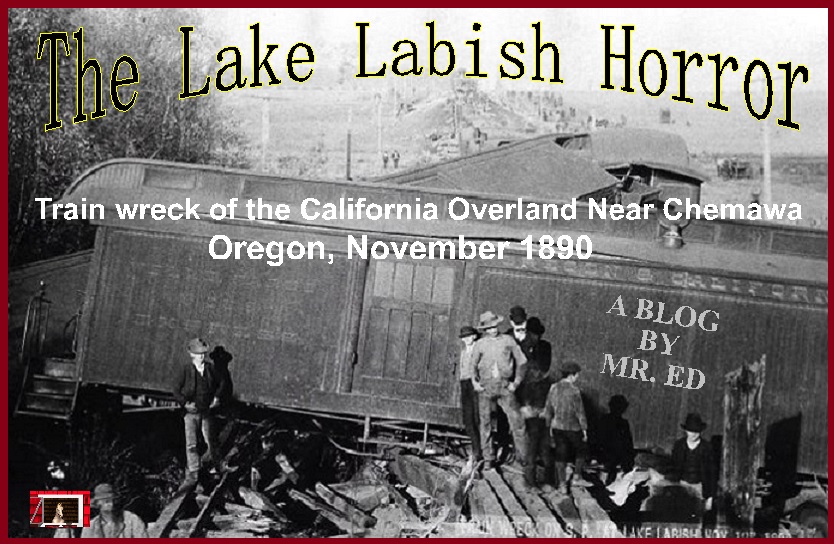
Greetings ~
It was in November of 1890 that yet another rail disaster took place. The common railroad was only around 100-years old at the time. There had been many accidents and mishaps. The wreak at Lake Labish had a relatively low death count as compared to many train crashes but was still a horrendous event.
The account here is taken from a news article published the day after the crash in the Statesmen Journal newspaper. It shows how news stories of that time were written and how, before television, radio and internet, news was received. Newspapers at the time had actual human reporters that found their way to the crash sites and reported firsthand. So, in most cases, what you read was what they saw and heard. In most cases, the news was not watered down or whitewashed. It was reported as it had happened. The following article shows the reporter's findings at the scene of this horrific event.
This was a period where, once a reporter arrived, he or she, may find themselves actually helping in the rescue of the injured and dying. They also had to climb up and over broken rails, splintered wood and steaming metal to get the whole story.
This was a reporter's duty as it is today. There are still those who risk their lives in terrible situations to simply bring us the news of war and disaster. Right now as I write this, my hat is off to the many reporters who are covering the story of Russia's monster Putin as he murders thousands in Ukraine. These men and women are on the front lines the same as those before them during World Wars I and Ii and beyond. God speed to them all.
